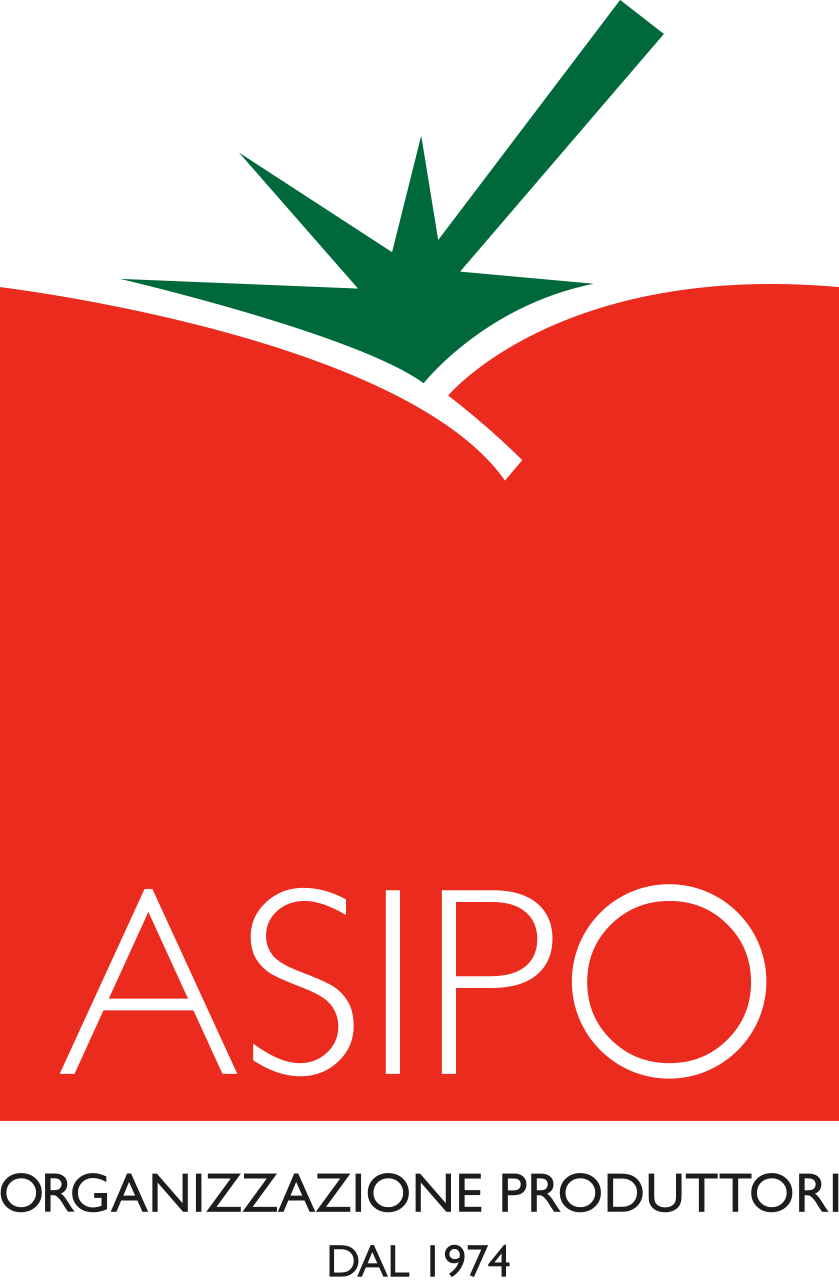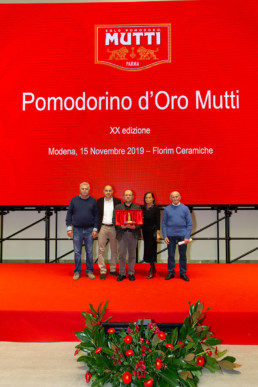An invitation to the ASIPO world

CHAIRMAN’S PRESS RELEASE: “As an association we have decided to talk about our activities to all stakeholders of the industry, to our clients and explain to end consumers around the world what is done to protect their health, the workers and the environment, and for this reason we wanted to innovate and write a new chapter in our history.
We present our restyled logo and website, the result of months of intense work of research and comparison.
This brings us to support our members, providing them with an additional tool in which to find all the necessary information; we want to offer a confrontation point and open dialogue with technicians, consultants and clients.
We tell the consumer that we are by his side, because he knows that the tomato grown by the ASIPO that he finds in the past, in the diced, in the pulp he buys at the supermarket, was obtained only by the commitment of our Members in Italy, according to according to the highest quality and safety standards and checks, respecting workers’ rights and preserving the environment and natural resources. We talk about all this and much more in the website which is an invitation to learn about the missions for which we were founded and our world, which is made by our members and by the tomato”.
The Chairman
Brusatassi Gianni
ASIPO was awarded at the 20th Edition of the Pomodorino d'Oro
Our hearty congratulations to the Members who have entered the ranking of the 20th Edition of the Pomodorino d’Oro, the award that the Mutti SpA annually acknowledges to the contributing farmers who have delivered the best tomato during the campaign.
There are 15 members in the rankings. We are proud to say that the top 3 are our members:
- FRANZONI LUCIANO;
- AGR. SCHIENA FRANCO, PIETRO E LUCIANO S.S.;
- RICALI GIORGIO E MARINA SS;
CREA project “RESEARCH AND INNOVATION ON THE INDUSTRY TOMATO: THE PROJECT OF ITALIA ORTOFRUTTA AND CREA”
The first year of activity of the biannual applied research project “Innovative agronomic techniques to increase the dry substance content and the degree brix in industrial tomato” has ended with the scientific responsibility of CREA OF Vegetable and Ornamental Crops of Pontecagnano and coordinated by Italia Ortofrutta Unione Nazionale and co-financed by 11 Producer Organizations of the industry associated with the Union (Italia Ortofrutta, APOPA, AOA, APOC Salerno, OP Terra Orti, Assodaunia, OP Mediterraneo, OP Ortofrutta Sol Sud, Asport, OP Ferrara, AS. IPO, APO Gargano).
Improve the quality of industrial tomatoes in terms of soluble solids content (Brix degree) and total solids (dry residue) through innovations in field cultivation techniques and transfer the results of an ad hoc scientific research to the POs of the industry to increase the company competitiveness on the market and enhance the product value by meeting the processing industry and consumer demands, these are the operational objectives of the applied research project.
“We have always been convinced – explains Vincenzo Falconi, Italia Ortofrutta director- of the need to have a closer connection between the productive world and those of applied research necessary to introduce innovations which help our POs compete and achieve a better product”.
“For this reason – continues Falconi – that by using the opportunity of measure 4 “Research and experimental production” of the operational programmes we have collected the research needs of our members and challenged the realisation of a quality improvement project which involved a high number of POs and to communicate the research world with that of production through the creation of a special control room, coordinated by the Union”.
The experimental tests were carried out on soils located in three representative areas of the various areas of cultivation of industry tomato, in other words Emilia Romagna, Campania and Puglia in which the following activities were carried out: foliar application to provide additional potassium, using antiperspirants and bio-stimulants based on active molecules or micro-organisms, controlled irrigation management and varietal comparison between hybrids, recently introduced on the market and other references, already widely used, in testing environments.
“Considering the unfavourable climatic conditions for crops (very low temperatures until mid-June followed by peaks of excessive heat, until the end of the crop, in all three environments, and abundant and frequent rainfalls, at the beginning of the cycle, for the Campania and Emilia Romagna areas) – Mario Parisi states, CREA OF researcher from Pontecagnano and scientific manager of the project – the productions recorded in the three test areas were in line with the 2019 tomato campaign tread: significantly negative in Campania for early transplants, excellent in Foggia (and in other areas of the South), good in the Parma area, an important tomato dock in Northern Italy.

“A special thanks goes to the 11 Producer Organisations who believed in the project and especially to the technical managers of the POs who together with their respective technical staff have teamed up and conducted the experimental tests with dedication and passion” adds Parisi.
Davide Previati, technical manager of the ASIPO PO, was particularly involved in the testing of the northern Italy area. Previati states: “It has been a demanding and meticulous work from the scientific point of view, but that’s how experimentation is done in agriculture which wants to progress and keep up with the times; it is also my pleasure to thank all technician staff who collaborated with me and without which it would not have been possible to complete the experimentation”.
Even Giuseppe Caruso of the APOPA PO, involved in the Marigliano testing (province of Naples), expresses satisfaction for the work of this first year: “The environmental climate of this year was not the most favourable for the tomato cultivation but, If we wish to pursue the transfer of innovations it is necessary that the testing is done in the same conditions in which our producers find themselves when working”.
Satisfaction is also expressed by Michele Iacullo of the Ortofrutta Sol Sud OP who conducted the testing in the Foggia area: “I have always dealt with tomatoes and crops, by nature I am curious and always looking for new techniques. This project gave me the opportunity to compare myself even more with colleagues from other production areas and with the technicians of our research institutes. If we really succeeded in having a greater exchange with these Bodies, our industry could make faster progress”.
2019 Campaign Analysis
It was a complicated campaign: yields per hectare were overall low and, in many cases, the higher price obtained for 2019 did not compensate in terms of Gross Salable Production (GSP).
We started with the transplants in the first week of April, with a favourable pedoclimatic situation and with well prepared soils, then in May we suffered heavy and frequent rainfalls which, in many areas of Northern Italy, were obligated to suspend the transplants between 15 and 20/25 of May. This situation meant that more than 20% of the planned area was planted in June that lasted even until 15-20 of June.
Finally, after the rainfalls and low temperatures, there was an explosion of heat in July with peaks clearly above the seasonal averages.
The early transplants, carried out from early April to the end of the month, have suffered a decisive return of cold right at the end of the month with night temperatures close to zero. For this reason, many little plants have not developed according to the standard and have highlighted some plant protection issues such as bacterial disease and, subsequently, the alternaria. In terms of results, production was poor while maintaining the good quality besides with some colour reduction in some varieties.

The average yield of the premature was between 450 and 500 quintals per hectare, when generally it stands between 550-600 quintals per hectare.
The average transplants (during May) are those that, as predictable, suffered the most from the continuous and heavy rainfalls, the ripening forward to June.
What was planted in the first fifteen days of May, however, developed in normal conditions and gave good yields (over 700 quintals per hectare) and excellent quality.
As for late transplants (end of May and June) many varieties, coming from the planning of May shifted forward, showed a long cultivation cycle (110-120 days) and the rains, the lowering of the temperatures, especially the night ones, and the reduction of the photoperiod of September prevented the same degree of ripeness with consequent yield loss due to the unripe product evaluable at 40% with average yields obtained of 600-650 quintals per hectare.
The ASIPO final production during the 2019, compared to the contracted quantity, is approximately – 19%, mainly due to climatic problems and to an increase in natural calamities such as excess water and hail, much more significant than in the past, mainly in the Piacenza area.
About 19% of the shortfall, an estimated 9% share is due to natural calamities, while the remaining 10% is due to differences in ripening and/or limited vegetative development and to a precautionary contractual yield.
From the plant protection point of view we have recorded the slight reduction of the pressure of the red spider (Tetranychus Urticae), especially in the pedecollinare piacentino area, thanks also to the effective prophylaxis of contrast developed with the Plant Protection Consortium and the Inter-branch Organisation of industrial tomato of Northern Italy.
As far as fungal diseases are concerned, particular problems have not been highlighted except the slight presence of alternaria in the early plants and late blight at the end of the season (September – October) due to the rains.


